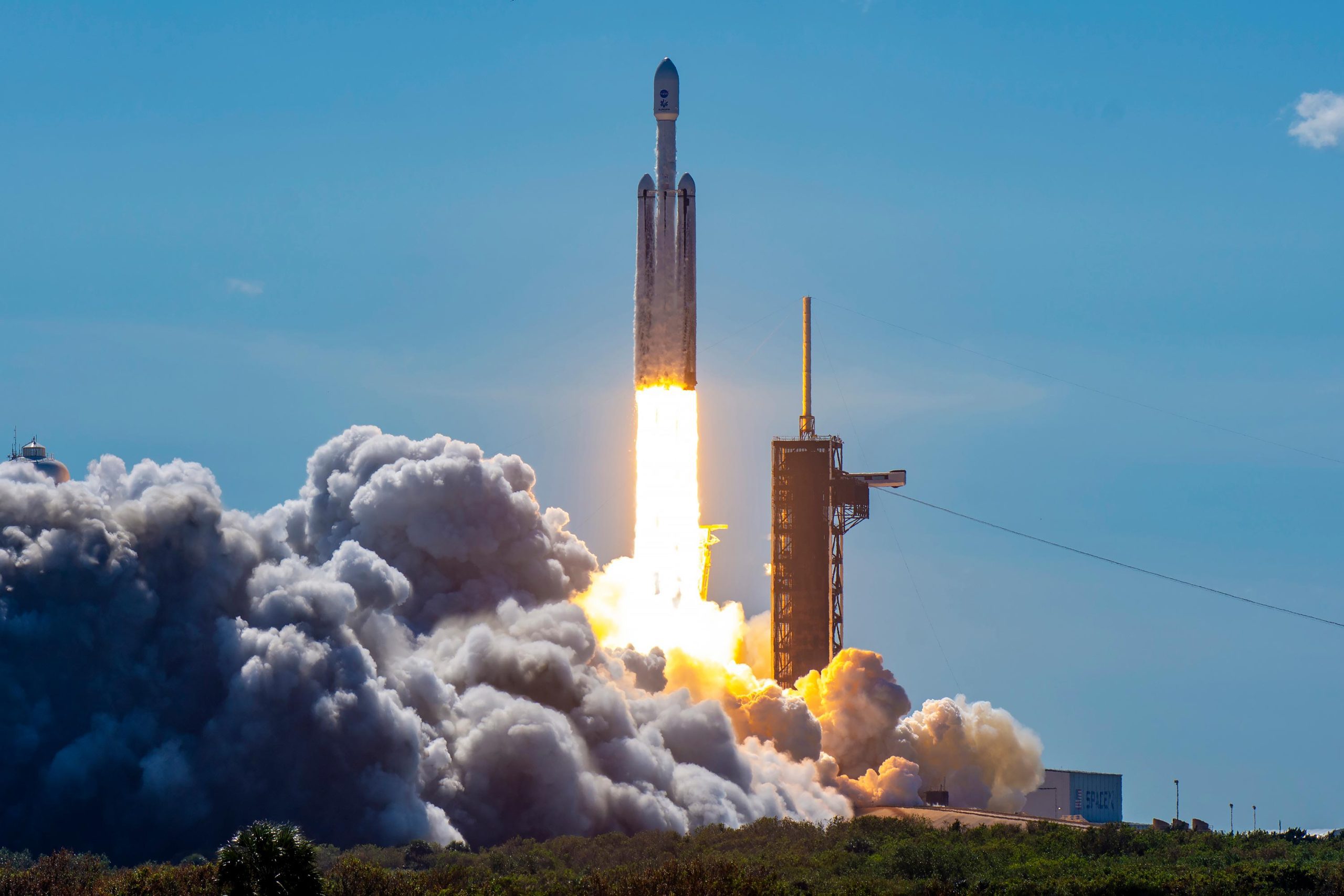
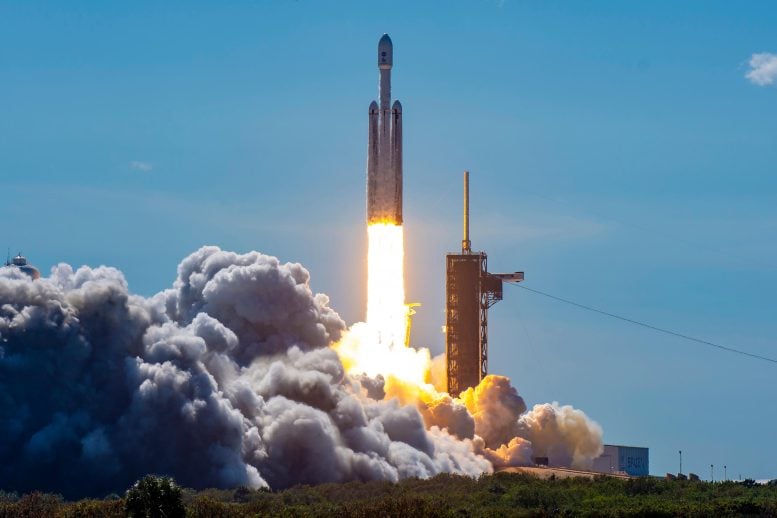
NASA’s Europa Clipper mission, launched by SpaceX Falcon Heavy, embarks on a six-year journey to explore Jupiter’s moon, Europa, utilizing gravity assists and aiming to study its icy subsurface ocean.
Read the timeline of the mission launch (and see the pictures and videos) as it proceeds from “go” and liftoff to signal acquired and solar arrays deployed:
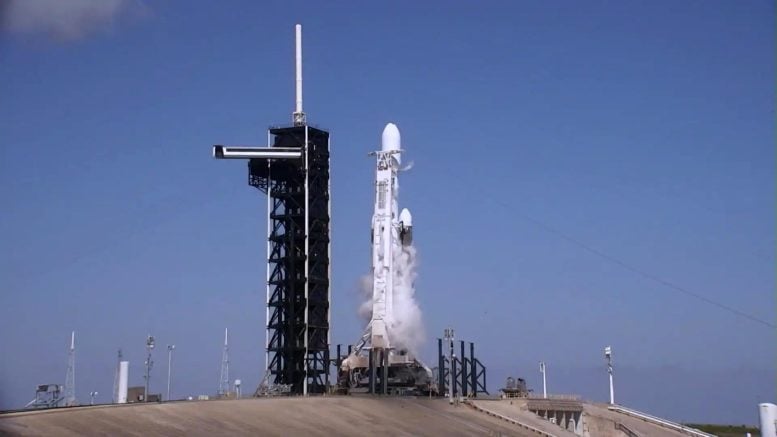
NASA Launch Manager Gives ‘Go’ for Launch
NASA Launch Manager Tim Dunn has just given NASA’s Europa Clipper mission a “go” for launch! Mission and launch managers are counting down to the launch of the SpaceX Falcon Heavy rocket from Launch Complex 39A at NASA’s Kennedy Space Center in Florida.
This will be NASA’s second interplanetary mission for SpaceX’s Falcon Heavy, following the launch of NASA’s Psyche mission exactly a year ago yesterday. Europa Clipper is reusing the side boosters from NASA’s Psyche mission for this launch.
Because Europa Clipper needs a lot of energy to start it on its interplanetary trajectory to Jupiter, the rocket for this launch will be fully expendable, with the exception of a recoverable fairing. This means that there will be no return of first-stage boosters for this launch. Although SpaceX has flown a fully expendable Falcon Heavy before, this is the first time that NASA’s Launch Services Program is launching a mission for the agency with this Falcon Heavy configuration, though the program has extensive experience now with both expendable as well as reusable rockets. In addition to not recovering any boosters, technicians removed components only needed for reuse to increase the performance of the rocket, to launch the largest planetary spacecraft NASA has ever developed and give it the power it needs to travel to Jupiter.
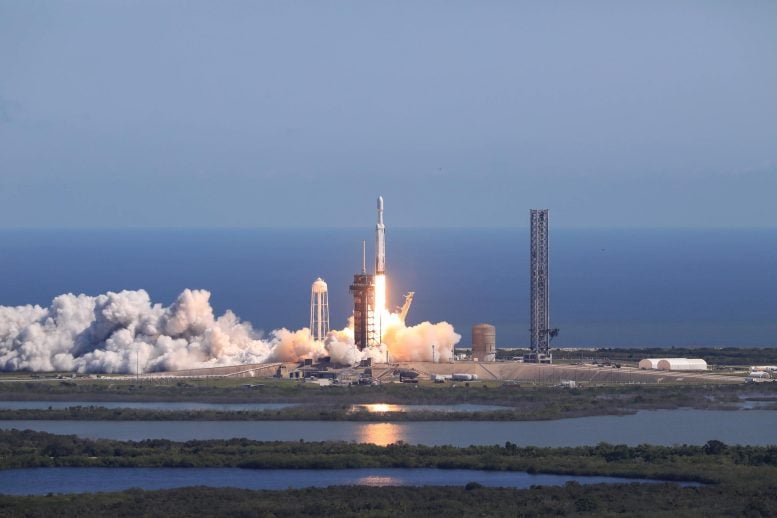
Liftoff of NASA’s Europa Clipper!
We have liftoff! NASA’s Europa Clipper spacecraft, launched from Launch Complex 39A at Kennedy Space Center in Florida at 12:06 p.m. EDT.
The Falcon Heavy’s 27 Merlin engines are generating more than 5 million pounds of thrust, quickly pushing the vehicle through the atmosphere and away from the Florida spaceport. The Falcon Heavy first stage consists of three Falcon 9 boosters strapped together — two sides and a central booster. An upper second stage atop the central booster carries the Europa Clipper spacecraft.
Coming up next, the launch vehicle will reach Max Q, or moment of peak mechanical stress on rocket, followed by side booster separation, then booster engine cutoff about two minutes later.
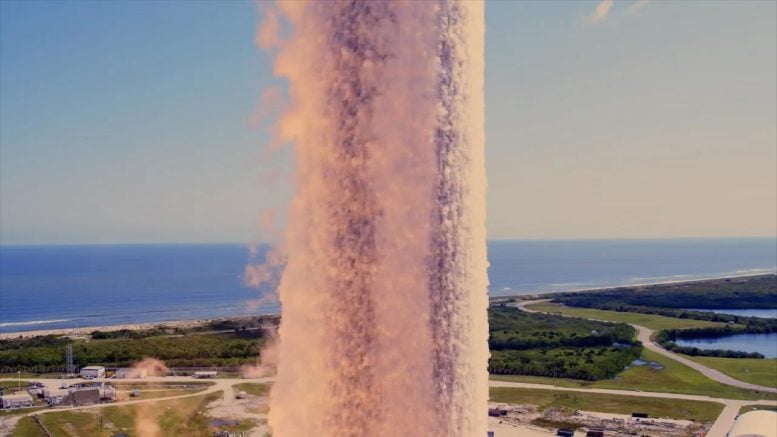
Rocket Reaches Max Q, Booster Engines Cutoff, First Stage Separation
The Falcon Heavy passed Max Q, or the moment of peak mechanical stress on the rocket, and reached booster engine cutoff (BECO), where both boosters cease firing and separated from the center core. The center booster also completed its burn and separated from the second stage that carries the Europa Clipper spacecraft. After that the fairing halves separated and are descending back to Earth, while second stage has started its approximately 3-minute burn to place Europa Clipper in a parking orbit.
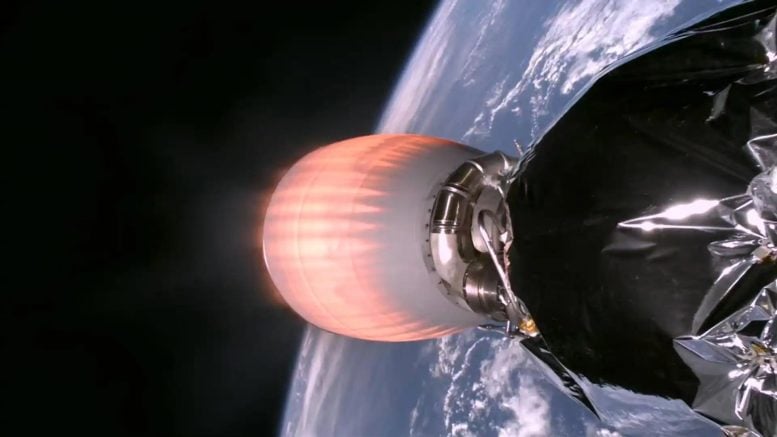
Second Stage Engine Cutoff Reached
The initial second stage engine cutoff (SECO-1) is complete. The second stage engine will restart for its second burn (SES-2) in just about 40 minutes. This second burn (SECO-2) will give the Europa Clipper spacecraft the additional thrust needed to escape Earth’s gravity, after which the spacecraft will separate from the second stage.
Two fairings protecting NASA’s Europa Clipper spacecraft separated. The fairings will be recovered by SpaceX’s team. Europa Clipper is traveling to Jupiter’s icy moon, Europa, to study its icy crust and the salty ocean below. Credit: NASA
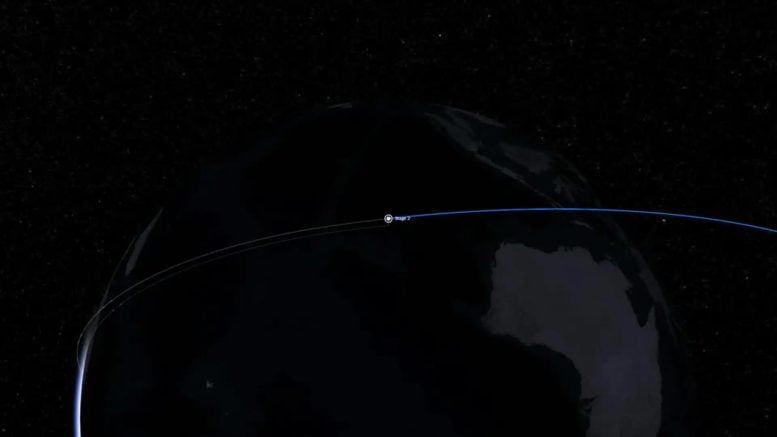
Orbit Departure Burn Coming Up
The orbital departure burn is planned to happen in just about 5 minutes. The second stage engine will restart for its second burn (SES-2) and will continue to burn for approximately 3 minutes. This second burn will give the Europa Clipper spacecraft the thrust it needs escape Earth’s gravity. When the burn is complete, the spacecraft will separate from the second stage, which will enter a heliocentric orbit, while the Europa Clipper spacecraft will then continue its roughly six-year journey to Jupiter and its moon, Europa. However, before it travels to Jupiter, the spacecraft will need two gravity assists to help accelerate it on its 1.8-billion-mile trip, with the first gravity assist coming in February 2025 at Mars, and the second during an Earth flyby in December 2026.
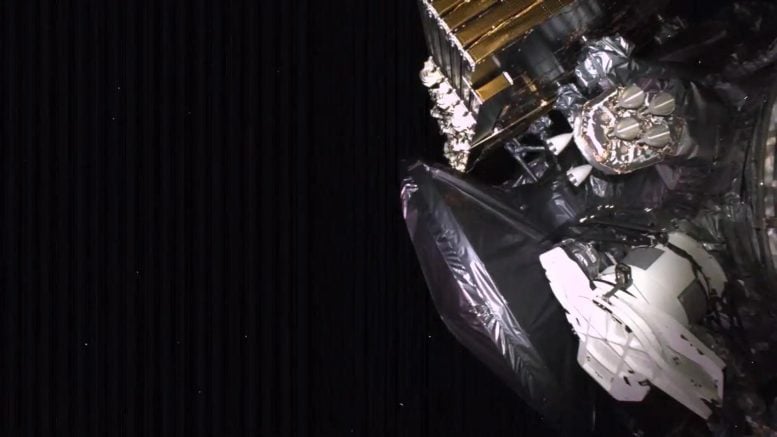
NASA’s Europa Clipper Spacecraft Separates From Falcon Heavy Second Stage
The second stage of the SpaceX Falcon Heavy completed its Earth departure burn, and NASA’s Europa Clipper spacecraft separated from the second stage. Technicians will now work to acquire signal from the spacecraft to verify its health and the spacecraft will spread its massive solar arrays to power itself as it continues on its mission to explore Jupiter’s icy moon Europa.
NASA’s Europa Clipper spacecraft has separated from SpaceX’s Falcon Heavy rocket. Credit: NASA
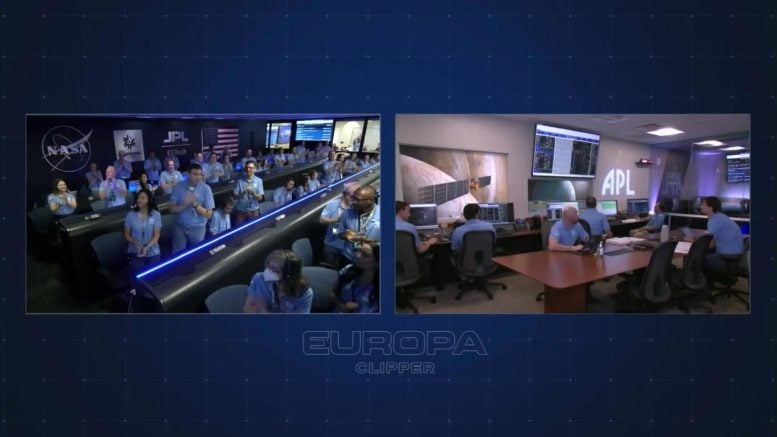
Signal Acquired – NASA’s Europa Clipper Begins Journey to Jovian System
Mission controllers for NASA’s Europa Clipper have received full acquisition of signal from the spacecraft.
NASA’s Europa Clipper will be the first mission to conduct a detailed science investigation of Jupiter’s moon Europa. Scientists believe Europa has a salty ocean beneath its icy crust that potentially could hold the ingredients necessary to sustain life.
The spacecraft, the largest NASA has ever built for a planetary mission, launched on a SpaceX Falcon Heavy rocket from NASA Kennedy’s Launch Complex 39A in Florida at 12:06 p.m. EDT. This will be NASA’s Launch Services Program’s third primary mission launching on a Falcon Heavy rocket.
Jupiter is on average some 480 million miles from Earth — as both planets are in motion around the Sun, the distances between the two vary. Europa Clipper will travel 1.8 billion miles over more than five years to reach the Jovian system in April 2030, using “gravity assists” of two other planets to help it accelerate towards Jupiter. After launch, Europa Clipper will head toward Mars, coming to within 300 to 600 miles of the surface, then slingshot back toward Earth, coming about 2,000 miles from the planet. Through these gravity assists, Europa Clipper will achieve the velocity needed to reach Jupiter in April 2030, when the spacecraft will fire its engines to enter orbit around the solar system’s largest planet.
After it begins orbiting Jupiter, Europa Clipper will spend about a year altering its trajectory to prepare for its first Europa flyby. The spacecraft will then spend about three years soaring past Europa dozens of times and sending data back to Earth. Over the course of the mission, the spacecraft will investigate nearly the entire moon.
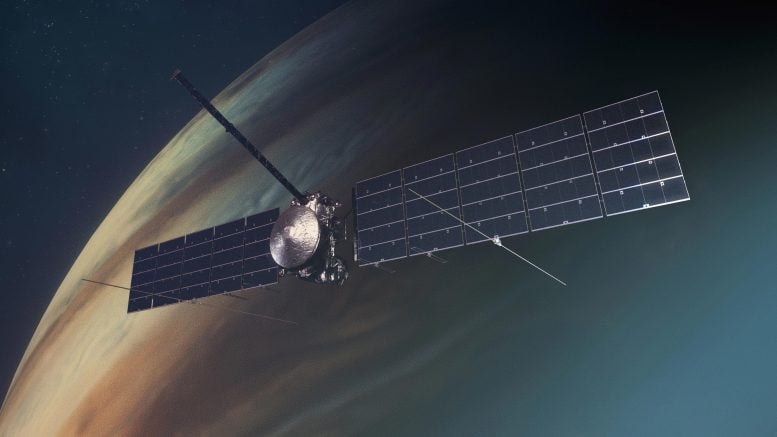
Solar Arrays on NASA’s Europa Clipper Fully Deployed in Space
Mission controllers at NASA’s Jet Propulsion Laboratory in Southern California have confirmed that the two solar arrays flanking the main body of the Europa Clipper spacecraft have fully unfolded. This means that the spacecraft now has a reliable source of power for the rest of its journey to Jupiter and tour of the Jovian system.
This animation segment shows the deployment of NASA’s Europa Clipper solar arrays after launch. Credit: NASA/JPL-Caltech
The process began with the cutting of hold-downs keeping the solar arrays folded against the sides of the spacecraft and then the unfolding of one “wing” at a time. With each wing measuring 46 ½-feet (14 meters) long, Europa Clipper’s solar arrays are the biggest NASA has ever developed for a planetary mission.